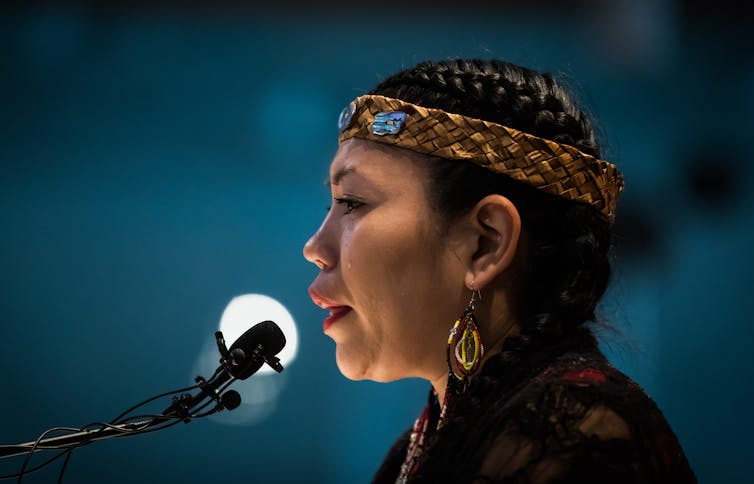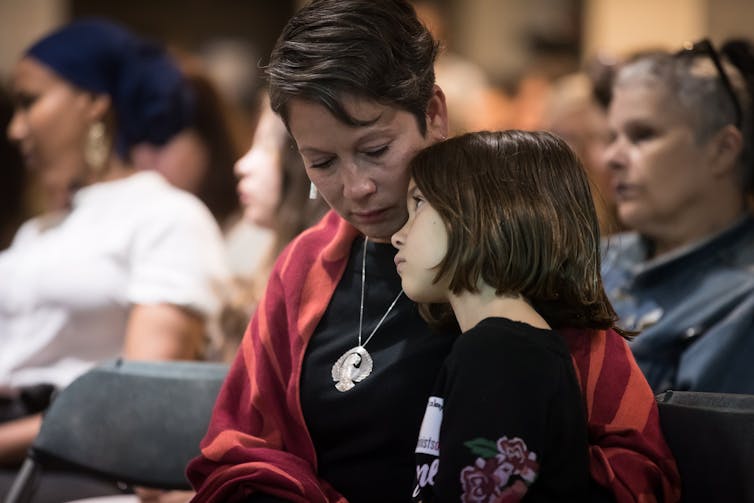Pipeline approval will likely lead to more legal challenges and protests that will continue to delay and block the controversial project
[guest post by Stand.Earth]
The Canadian federal government’s announcement reapproving the Trans Mountain Pipeline is inconsistent with the government’s declaration of a climate emergency the day before. This will likely lead to more legal challenges and protests that will continue to delay and block the controversial project, said international environmental organization Stand.earth.
“Approving the Trans Mountain Pipeline is inconsistent with our government’s declaration of a climate emergency. Oil and gas emissions are the largest and fastest growing component of Canada’s emissions. If we are going to fight climate change in Canada, we need to face the fact that we can no longer expand fossil fuel production and infrastructure. Canada’s oil is high cost and high carbon, and it is struggling to compete in a global market. Investing pipeline profits into clean energy? How about you just put the $10 billion directly into clean energy, instead of wasting taxpayer money on this risky investment?” said Tzeporah Berman, International Program Director at Stand.earth. “We stand by city leaders, the B.C. government, and First Nations who oppose this project, and we call on organizations and individuals around the world to stand with us.”
“No matter who forms the next government in Ottawa, the Trans Mountain Pipeline will never be built,” said said Sven Biggs, Climate and Energy Campaigner at Stand.earth. “People care deeply about protecting the BC coast, and British Columbians remain opposed to this pipeline and the risks of a devastating oil spill that come with it. Whenever construction resumes, another wave of protests is guaranteed in British Columbia.”
Pipeline opposition
Opposition to the pipeline remains strong, with tens of thousands of people pledging to stop the pipeline and multiple cities, municipalities, and the province of B.C. also stating opposition.
- People power: Nearly 27,000 people have pledged to do “whatever it takes” to stop the Trans Mountain Pipeline.
- Number of arrests: From March through August 2018, around 230 people with Protect the Inlet and other environmental groups were arrested for violating a court-ordered injunction while demonstrating against the pipeline. More than 30 people have served jail time after receiving sentences in BC Supreme Court.
- Government opposition: Opposition to the Trans Mountain Pipeline includes the Province of British Columbia; the state of Washington; the cities of Vancouver, Burnaby, and Victoria; 19 other BC municipalities; and 350,000 petition signers.
- First Nations opposition: Alongside legal challenges, more than 150 First Nations and Tribal Chiefs have signed the Treaty Alliance opposed to tar sands expansion, which includes opposition to the Trans Mountain Pipeline. The Union of BC Indian Chiefs (UBCIC), Tsleil-Waututh Nation, the Coldwater Indian Band, the Neskonlith Indian Band, Squamish Nation, and many other First Nations in British Columbia are outright opposed to the project, as well as Lummi Nation, the Swinomish Indian Tribal Community, Tulalip Tribes, and Suquamish Tribe in Washington state. After today’s announcement, Squamish Nation Council criticized the approval as an attack on indigenous rights, and Lummi Nation stated their unequivocal opposition to the pipeline expansion project.
Project risks

Construction of the Trans Mountain Pipeline and the likelihood of a spill associated with the project poses significant risks to the climate, the public safety of the communities it passes through, the economy, and the critically endangered Southern Resident Killer Whales.
- Climate change: If built, the Trans Mountain Pipeline would expand the production of Canada’s oil sands, and the increase in emissions would be the equivalent of putting 2.2 million cars on the road. The United Nations Intergovernmental Panel on Climate Change issued a report in late 2018 showing that Canada has just 12 years to reduce its climate emissions by 40%. Meeting those climate objectives is simply not possible if Canada continues to build new fossil fuel infrastructure like the Trans Mountain Pipeline.
- Spill risk: If the Trans Mountain Pipeline is built, it will lead to a 700% increase in oil tanker traffic in the Salish Sea, with the likelihood of an oil spill in the 50-year lifespan of the project as high as 79-87%. A major oil spill would expose the entire Vancouver population to human health risks due to inhalation of toxic chemicals.
- Public safety: A potential tank fire at the Burnaby Mountain Terminal poses a significant risk to nearby high-density neighborhoods, elementary schools, and Simon Fraser University. Proposed increased storage capacity could cause multiple tanks to ignite during a fire.
- Economy: An oil spill would put at risk the 98,000 coast-dependent jobs in British Columbia. By comparison, the Trans Mountain Pipeline would create an average of 2,500 jobs a year for two years during construction, with 90 full-time jobs after construction.
- Tar sands markets: Economists have questioned Trudeau’s claims that the pipeline would help Canada reach new markets in Asia, instead of simply expanding into existing U.S. markets in California and Washington, where opposition to the pipeline is heating up. Last week in California, the Protect the Bay coalition launched to oppose an increase in tar sands tankers in the Bay Area. In May, the California Assembly threw its support behind AB 936, a proactive measure to protect California’s critical marine and freshwater resources from harms caused by a spill of non-floating oils like tar sands, which if passed, would join similar legislation in Washington state on non-floating oils. In Washington, the King County Safe Energy Leadership Alliance sent a letter to the Department of Ecology to strengthen oil spill response requirements for dilbit, specifically calling out the Trans Mountain Pipeline. The letter includes signatories from multiple city mayors, city and county councilmembers, and state senators.

- Endangered orcas: Even without a spill, the increased tanker traffic and the resulting underwater noise disturbance will have a huge impact on the endangered Southern Resident Orca population, and could push the struggling population toward extinction.
Republished from Tzeporah Berman: Approving the Trans Mountain Pipeline is inconsistent with Canada’s declaration of a climate emergency
Image Credits
White Rock, BC – Coast Salish housepost and Haida totem pole © by Joe Mabel is licensed to share under the Creative Commons Attribution-Share Alike 3.0 Unported license.
Oil Flag of Canada © by Laurel Russwurm photographed at Jobs.Justice.Climate 2015 Toronto is licensed to share under the Creative Commons Attribution 3.0 Unported license.
#FridaysForFuture Save Orcas © by Laurel Russwurm, photographed at #FridaysForFuture Waterloo (2019) is licensed to share under the Creative Commons Attribution 3.0 Unported license.





